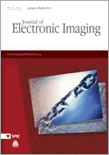
JOURNAL OF ELECTRONIC IMAGING
Scope & Guideline
Transforming Knowledge into Insight in Electronic Imaging.
Introduction
Aims and Scopes
- Image Processing Techniques:
Research covering various image processing methods including denoising, segmentation, and enhancement algorithms, aimed at improving image quality and usability. - Computer Vision Applications:
Studies focusing on the development of innovative computer vision algorithms for object detection, recognition, and tracking in diverse environments. - Machine Learning and AI Integration:
Papers exploring the integration of machine learning and artificial intelligence in imaging tasks, such as automated image analysis and classification. - Multimodal Imaging:
Research on the fusion of different imaging modalities, such as visible and infrared imaging, to enhance the interpretability and effectiveness of imaging systems. - Quality Control and Inspection:
Application-driven research targeting the use of imaging technologies for quality control in industrial settings, emphasizing methods for defect detection and monitoring. - Image Security and Privacy:
Studies that investigate techniques for image encryption, watermarking, and steganography to ensure the confidentiality and integrity of image data. - Real-time Processing and Applications:
Research focused on real-time imaging applications, including video processing and analysis, with an emphasis on efficiency and speed.
Trending and Emerging
- Deep Learning for Image Analysis:
There is a significant rise in research utilizing deep learning techniques for various image analysis tasks, including segmentation, object detection, and image enhancement. - Integration of AI in Imaging:
The application of artificial intelligence and machine learning in imaging processes is becoming more prevalent, focusing on automated systems for real-time analysis and decision-making. - Underwater and Remote Sensing Imaging:
Research targeting specialized imaging environments, such as underwater imaging and remote sensing, has gained traction, addressing unique challenges and applications in these fields. - Generative Models in Imaging:
The use of generative adversarial networks (GANs) and other generative models for tasks like image synthesis, enhancement, and restoration is emerging as a prominent area of study. - Image Quality Assessment and Enhancement:
An increased focus on developing metrics and methodologies for assessing and enhancing image quality, particularly in low-light and challenging conditions. - Multimodal Image Fusion:
Research trends indicate a growing interest in combining multiple imaging modalities to improve the robustness and accuracy of image analysis. - Privacy-Preserving Imaging Techniques:
Emerging techniques that ensure data privacy and security in imaging, such as advanced watermarking and encryption methods, are becoming increasingly relevant.
Declining or Waning
- Traditional Image Enhancement Techniques:
Methods such as histogram equalization and basic filtering techniques are appearing less frequently, as more sophisticated machine learning and deep learning methods gain prominence. - Hardware-Centric Imaging Solutions:
Research focused exclusively on hardware improvements, such as sensor technology, is declining in favor of software and algorithmic advancements that leverage existing hardware capabilities. - Basic Image Segmentation Methods:
Simple segmentation approaches are increasingly being overshadowed by complex, deep learning-based segmentation techniques, leading to a reduction in publications on traditional methods. - Static Image Analysis:
Research centered on static image analysis without considering temporal dynamics is waning, as the focus shifts towards dynamic and real-time image processing applications. - Manual Feature Engineering:
The reliance on manual feature extraction methods in imaging is decreasing as automated, data-driven approaches become more prevalent in machine learning and computer vision.
Similar Journals

COMPUTERS & ELECTRICAL ENGINEERING
Exploring the Frontiers of Computer Science and Electrical Engineering.COMPUTERS & ELECTRICAL ENGINEERING is a premier academic journal published by PERGAMON-ELSEVIER SCIENCE LTD, based in the United Kingdom. Established in 1973, the journal has consistently contributed to the fields of Computer Science, Control and Systems Engineering, and Electrical and Electronic Engineering. With an impressive impact factor and ranked in the top quartile (Q1) across these domains, it is recognized as a pivotal resource for researchers, practitioners, and students alike. The journal aims to disseminate high-quality research articles, reviews, and technical notes, with the goal of advancing understanding and fostering innovation within and beyond its scope. Researchers can enjoy unparalleled access to cutting-edge findings and technological advancements through contributions that span both theoretical frameworks and practical applications, making it an essential platform for anyone dedicated to exploring the intersections of these dynamic fields.

Journal of Medical Imaging
Pioneering Insights for Radiology and Imaging ExcellenceThe Journal of Medical Imaging, published by SPIE-SOC PHOTO-OPTICAL INSTRUMENTATION ENGINEERS, is an esteemed publication in the field of medical imaging, playing a pivotal role in advancing the discipline since its inception in 2014. With an ISSN of 2329-4302 and an E-ISSN of 2329-4310, this journal has garnered significant recognition, evidenced by its Q2 ranking in 2023 within the critical category of Radiology, Nuclear Medicine, and Imaging. The journal is dedicated to presenting cutting-edge research and innovations that enhance diagnostic imaging techniques and methodologies, appealing to a diverse audience of researchers, professionals, and students alike. Offering valuable insights into the interplay of optics and imaging technologies, it serves as a crucial resource for fostering knowledge and collaboration in the medical community. Notably, it holds a competitive rank of #136 out of 333 in its Scopus category, placing it in the 59th percentile—a testament to its influence and relevance in ongoing medical research. Therefore, the Journal of Medical Imaging stands out as an essential platform for disseminating transformative findings and innovations in healthcare imaging.
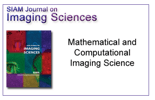
SIAM Journal on Imaging Sciences
Navigating the Intersection of Mathematics and Imaging.SIAM Journal on Imaging Sciences is a prestigious academic journal published by SIAM PUBLICATIONS, focusing on the latest advancements and applications in imaging sciences within the fields of applied and general mathematics. Since its inception in 2008, the journal has established itself as a premier outlet for original research, evidenced by its remarkable standing in the academic community, including a Q1 ranking in both Applied Mathematics and Mathematics (miscellaneous) for 2023. With a Scopus rank of #45 in General Mathematics and an 88th percentile achievement, the journal continues to attract high-quality contributions, making it a vital resource for researchers, professionals, and students eager to stay at the forefront of imaging science developments. Although not currently open access, the journal provides significant visibility through its rigorous peer-review process and commitment to scholarly excellence, ensuring that published works contribute substantially to knowledge in the field. For those looking to delve into innovative imaging techniques or mathematical modeling approaches, the SIAM Journal on Imaging Sciences remains an essential reference point.

MULTIMEDIA SYSTEMS
Advancing Knowledge in Media Technology and BeyondMULTIMEDIA SYSTEMS, published by SPRINGER, is a premier academic journal dedicated to the dynamic field of multimedia technology and its applications across various domains. With the ISSN 0942-4962 and E-ISSN 1432-1882, this journal has established itself as an essential resource since its inception in 1993, providing researchers and professionals with rigorous peer-reviewed articles that explore innovative developments in Media Technology, Computer Networks, Hardware Architecture, Information Systems, and Software. As a testament to its academic impact, MULTIMEDIA SYSTEMS has attained a Q2 ranking in multiple key categories for 2023, alongside a notable Q1 ranking in Media Technology, highlighting its significance within the community. With a rich repository of knowledge and ongoing commitment to advancing multimedia research, this journal is an invaluable asset for those seeking to stay informed about cutting-edge technologies and methodologies. While the journal follows a traditional subscription model and is not presently open access, it ensures high-quality content that serves the scholarly needs of its audience, facilitated by its accessibility from Germany's respected academic infrastructures. For inquiries and submissions, the journal is based in New York, NY, further illustrating its global academic reach.
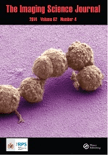
IMAGING SCIENCE JOURNAL
Transforming Perspectives in Pattern RecognitionImaging Science Journal, published by Taylor & Francis Ltd, serves as a vital resource for researchers and professionals in the fields of computer vision, pattern recognition, and media technology. With an ISSN of 1368-2199 and an E-ISSN of 1743-131X, this journal has been fostering scholarly dialogue since its inception in 1997, with a converged content offering extending through 2024. Its categorization in Quartile 4 in Computer Vision and Pattern Recognition and Quartile 3 in Media Technology highlights its relevance and contributions to emerging trends in these domains. Although it ranks 36th in the Engineering - Media Technology category and 96th in Computer Science - Computer Vision and Pattern Recognition, its innovative research and insights continue to attract the attention of scholars dedicated to advancing knowledge at the intersection of imaging technologies. Offering versatile access options, this journal is essential for students, researchers, and professionals aiming to stay informed and engaged in the rapidly evolving landscape of imaging science.
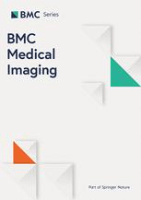
BMC MEDICAL IMAGING
Innovating Diagnostic Practices Through Open Access Research.BMC Medical Imaging is a premier open-access journal dedicated to advancing the field of radiology, nuclear medicine, and imaging technologies. Published by BMC in the United Kingdom, this journal serves as a vital resource for researchers, clinicians, and students, fostering a collaborative environment for sharing innovative findings and methodologies in medical imaging. With a commendable impact factor and an impressive Scopus ranking within the top 35% of its category, BMC Medical Imaging provides a platform for high-quality research to be disseminated widely and freely since its inception in 2001. The journal aims to cover a diverse array of topics, from advanced imaging techniques to their clinical applications, enhancing the understanding and effectiveness of diagnostic practices. By contributing to the body of knowledge and facilitating open access to research, BMC Medical Imaging plays a pivotal role in shaping the future of medical imaging and improving patient care.

International Journal of Image and Graphics
Illuminating the Path to Visual ExcellenceInternational Journal of Image and Graphics, published by World Scientific Publishing Co. Pte Ltd, serves as an essential platform for scholars and practitioners in the realms of Computer Graphics, Computer-Aided Design, and Computer Vision and Pattern Recognition. Established in 2001 and based in Singapore, this journal has become increasingly influential, with a reputation reflected in its Q3 and Q4 rankings across key categories in Scopus, highlighting its growing impact in the academic community. Open access options remain limited; however, the journal's commitment to disseminating high-quality research allows for a rich exchange of ideas among professionals and students alike. As the 2023 metrics indicate, contributions to the journal not only enhance individual academic portfolios but also promote advancements in image processing, fostering innovation and growth within the discipline until at least 2024. It is thus a vital resource for anyone looking to deepen their knowledge and understanding of contemporary trends and technologies in image processing and related fields.

SIGNAL PROCESSING-IMAGE COMMUNICATION
Pioneering Research in Image Processing ExcellenceSIGNAL PROCESSING-IMAGE COMMUNICATION, published by Elsevier, is a leading journal in the fields of Computer Vision, Signal Processing, and Electrical Engineering. With an impressive range of Quartile rankings in 2023, including Q1 in Electrical and Electronic Engineering and Q2 in Signal Processing, this journal is vital for researchers and professionals seeking the latest advancements and comprehensive studies in image communication technologies. Issued in the Netherlands, SIGNAL PROCESSING-IMAGE COMMUNICATION has been an essential resource since its inception in 1989, fostering innovation and collaboration among academia and industry. The journal provides a platform for high-quality peer-reviewed research, addressing significant challenges and solutions in the convergence of image processing and communication. Although currently not an Open Access journal, it offers subscription options that ensure a broad dissemination of groundbreaking knowledge. With a robust reputation reflected in its Scopus ranks, this journal serves as an indispensable reference for students and experts aiming to stay at the forefront of developments in this dynamic field.
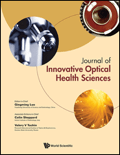
Journal of Innovative Optical Health Sciences
Revolutionizing Health with Innovative Optical TechnologiesWelcome to the Journal of Innovative Optical Health Sciences, an esteemed platform dedicated to the interdisciplinary exploration of optical technologies in health sciences. Published by World Scientific Publishing Co Pte Ltd, this open-access journal has been at the forefront of innovation since its inception in 2008, facilitating vital discussions and research advancements. With a notable impact factor and a commendable ranking in various scientific categories—including Q2 in Atomic and Molecular Physics, Q3 in Biomedical Engineering, and Q3 in Medicine (miscellaneous)—the journal serves as an essential resource for researchers, professionals, and students alike. Hailing from Singapore, we aim to bridge the gap between optical science and healthcare, promoting breakthroughs that enhance patient care and medical practices. Explore our diverse collection of studies and join a vibrant community committed to advancing knowledge in this cutting-edge field.
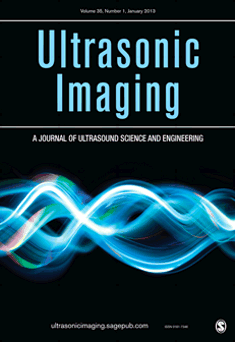
ULTRASONIC IMAGING
Shaping the Landscape of Medical Imaging with UltrasoundULTRASONIC IMAGING, published by SAGE PUBLICATIONS INC, is a leading journal within the fields of Radiology, Nuclear Medicine, and Imaging, with a particular focus on advancing the science and application of ultrasound technology. Since its inception in 1979, the journal has provided a platform for high-quality research, featuring innovative studies that bridge theoretical advancements and practical applications, making it an essential resource for researchers and professionals. With a notable impact factor reflecting its robust contribution to the medical community (2023: Q2 rankings in both Radiological and Ultrasound Technology and Radiology, Nuclear Medicine, and Imaging), ULTRASONIC IMAGING serves to disseminate pivotal developments in diagnostic imaging techniques, enhancing the understanding of ultrasound's role in patient care. Researchers are encouraged to explore this journal's collection of cutting-edge articles that push the boundaries of knowledge in ultrasound imaging and its implementation in clinical practices.